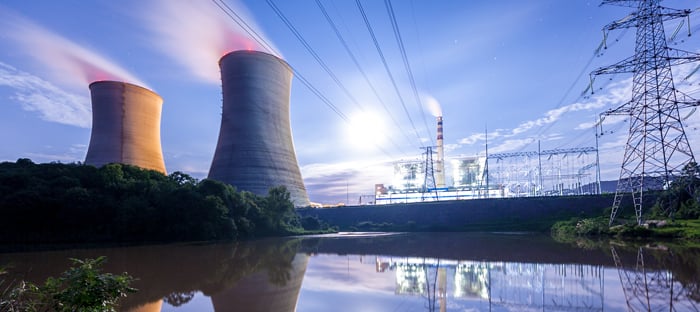Power your home
Enjoy price security with Safe Harbor fixed price energy plans

Power your business

Loading component...
Loading component...
Energy Resources

On the surface, carbon credits and carbon offsets look much the same. They are both tradable accounting mechanisms that help organizations mitigate climate change and shrink their overall carbon footprint by either reducing their own greenhouse gas (GHG) emissions or supporting projects that reduce carbon emissions elsewhere.
They also work similarly with respect to any cap and trade program, in which an entity can raise the cap on their emissions by “trading” GHG emissions with another through credits or offsets.
Both contribute to the development of a low-carbon economy by supporting renewable energy, clean energy infrastructure, sustainable agriculture, and other environmentally beneficial projects. And in many cases, both mechanisms encourage companies to adopt more sustainable practices and reduce their carbon footprint by providing financial incentives to do so.
That said, there are several differences between the two. It behooves organizations to understand those differences to determine which would best serve individual sustainability goals and what specifically may be required of them by a governing body.
A carbon credit is a permit that allows a specific amount of greenhouse gas emissions.
A carbon offset comes from a project that reduces or removes GHG emissions from the atmosphere.
Carbon credits and carbon offsets support sustainable business practices and the reduction of a company’s carbon footprint.
Organizations can purchase credits through the compliance trading market and offsets through the voluntary trading market.
Many organizations choose programs from nuclear energy, known as Emission-Free Energy Certificates (EFECs).
EFECs are auditable, helping businesses precisely reduce their carbon footprint.
At a high level, the difference between carbon credits and carbon offsets is all about greenhouse gas reduction and greenhouse gas removal. Carbon credits represent a reduction of GHG emissions while carbon offsets represent removal of GHG from the atmosphere. More specifically:
Carbon credits explained: A carbon credit is a permit that allows an individual, organization, or government to emit a specific amount of greenhouse gases, usually carbon dioxide (CO2). Each credit is equivalent to one metric ton of GHG removed from the atmosphere. Any surplus of credits can be sold by the company or organizations. Governments and larger organizations are more likely to sell and buy carbon credits, which are typically allocated through international agreements and traded via carbon credit markets.
Carbon offsets explained: A carbon offset comes from a project that reduces or removes GHG emissions from the atmosphere. Like carbon credits, each carbon offset is equal to one metric ton of GHG emissions. Organizations will discover there are several types of carbon offsetting program options, but not all carbon offset energy projects are the same. For example, reforestation and carbon capture projects may be based on future projections.
It's important to assess your business' carbon reduction goals and select the right carbon offset solution to meet those objectives.
The idea to leverage both carbon credits and carbon offsets to help mitigate climate change grew out of the United Nations Framework Convention on Climate Change (UNFCCC) and the Kyoto Protocol. Under the Kyoto Protocol, identified industrialized countries are committed to limiting and reducing greenhouse gas emissions in accordance with agreed individual targets.
Offering carbon offsets to those nations would provide a flexible and cost effective way to meet emissions reduction targets while also supporting sustainable development in developing countries, the UNFCCC believed. The effort was further incentivized by allowing countries that exceeded their assigned emissions reduction targets to sell those excess emissions reductions – carbon credits – through the open market.
Over time, both carbon offsets and credits have expanded beyond international protocols. Today both are used as voluntary tools for individuals, organizations, and governments to shrink carbon footprints, combat climate change, and hasten the transition to a low-carbon economy.
Flexible carbon credit market mechanisms, based on emissions permit trading systems, were established by the Kyoto Protocol. Markets allow for the purchase of carbon credits, which countries and organizations can use to help them achieve their overall GHG emissions reduction goals.
With respect to carbon credits, in each participating economic market a limit on the amount of GHG emissions is established by a regulatory body. The limit is divided into carbon credits, or permits, each representing the right to emit a certain amount of GHG. Organizations can purchase credits through the emissions trading market, allowing them to produce more GHG than they were originally allotted. Organizations that emit fewer GHGs than allotted can sell their credits on the open market.
Carbon credit markets can be divided into two categories:
Compliance marketplaces are where national, regional, or even international entities set carbon dioxide reduction targets and regulate the trade of carbon credits, or in other words an emissions allowance awarded to a company. Each credit is equal to one ton of CO2 emissions a company is allowed to generate. There are more than 30 compliance markets throughout the world, according to BloombergNEF, that, together, are valued at more than $850 billion.
Voluntary marketplaces allow companies and individuals to both purchase and trade carbon offsets on a voluntary basis or pursue projects targeted at removing carbon from the atmosphere. Examples include nuclear generation, renewable energy, reforestation, and emission capture projects. This marketplace includes all carbon offset transactions purchased with the sole intent to meet carbon neutral goals than for compliances purposes. The global voluntary carbon market was estimated to be worth over $200 billion in 2021, reports Reuters.
The decision to choose either carbon credits or carbon offsets depends on your organization’s specific circumstances and goals.
If your company must meet certain carbon emission reduction regulations, carbon credits may be your first option. If you have already reduced GHG emissions and wish to further invest in sustainability efforts and decarbonize your supply chain, you might choose to purchase carbon offsets. You can then use those offsets to compensate for emissions produced by corporate travel or emissions from supply chain vendors.
Many carbon offset investors choose to purchase offsets in the form of Emission-Free Energy Certificates (EFECs) from nuclear energy generators. Each EFEC represents one megawatt hour (MWh) of clean energy, sourced from non-emitting generation units such as nuclear. Energy Harbor has four nuclear generator units and has been helping organizations go carbon-free for years. Whether your actual power supply is through Energy Harbor or another power supplier, your business can be carbon free with EFECs produced by Energy Harbor.
EFECs are auditable, and each EFEC produced by Energy Harbor has a unique serial number that enables accurate carbon accounting, helping businesses precisely reduce their carbon footprint. Energy Harbor’s EFECs are auditable through the Generation Attribute Tracking System (GATS) managed by PJM Environmental Information Services.
Contract terms up to 10 years are available for customers nationwide, regardless of whether the state in which the business is located has a regulated or deregulated energy market. EFEC carbon offsets are available even for businesses that don't receive energy supply from Energy Harbor.
The answer is in the question. Carbon reduction projects reduce overall carbon emissions released into the atmosphere, and carbon removal projects remove CO2 from the atmosphere.
Reduction projects use a variety of methods to reach their goal, like switching to clean energy sources. Removal projects take on the daunting task of removing carbon from the air we breathe, either through natural or artificial means, like
planting new forests or implementing carbon capture and storage technology. The goal of both efforts is reducing the effects of climate change by limiting CO2 concentration in the atmosphere.
There are a few ways you can check the viability of a carbon offset project. First, determine whether GHG reduction would have occurred without project implementation. This is called additionality, and it is a key factor in establishing carbon offset project success.
Make sure the project is independently verified and certified by a reputable third-party organization and that its carbon accounting methodology accurately quantifies the reduction or removal of GHGs from the atmosphere.
If the reduction or removal isn’t permanent, that’s a red flag, as is “leakage,” in which GHG emissions simply shift elsewhere.
Like any market, the economics of carbon credits varies based on several factors. Those include supply and demand, regulatory changes, and market speculation, all much the same as the stock market.
Project quality matters as well, which can come as a surprise to some. Does the carbon credit fulfill its mission? And how does that match the success of other projects and the carbon credits they produce? A higher quality carbon credit is almost always worth more.
While they shouldn’t be viewed as a substitute for sustainability tactics, investing in carbon offsets and carbon credits can help you achieve your sustainability goals by compensating for the GHG emissions you cannot avoid. More than that, you support efforts to help clean the environment, combat climate change and help the world reach its net zero goals.
Contact Energy Harbor to get started.